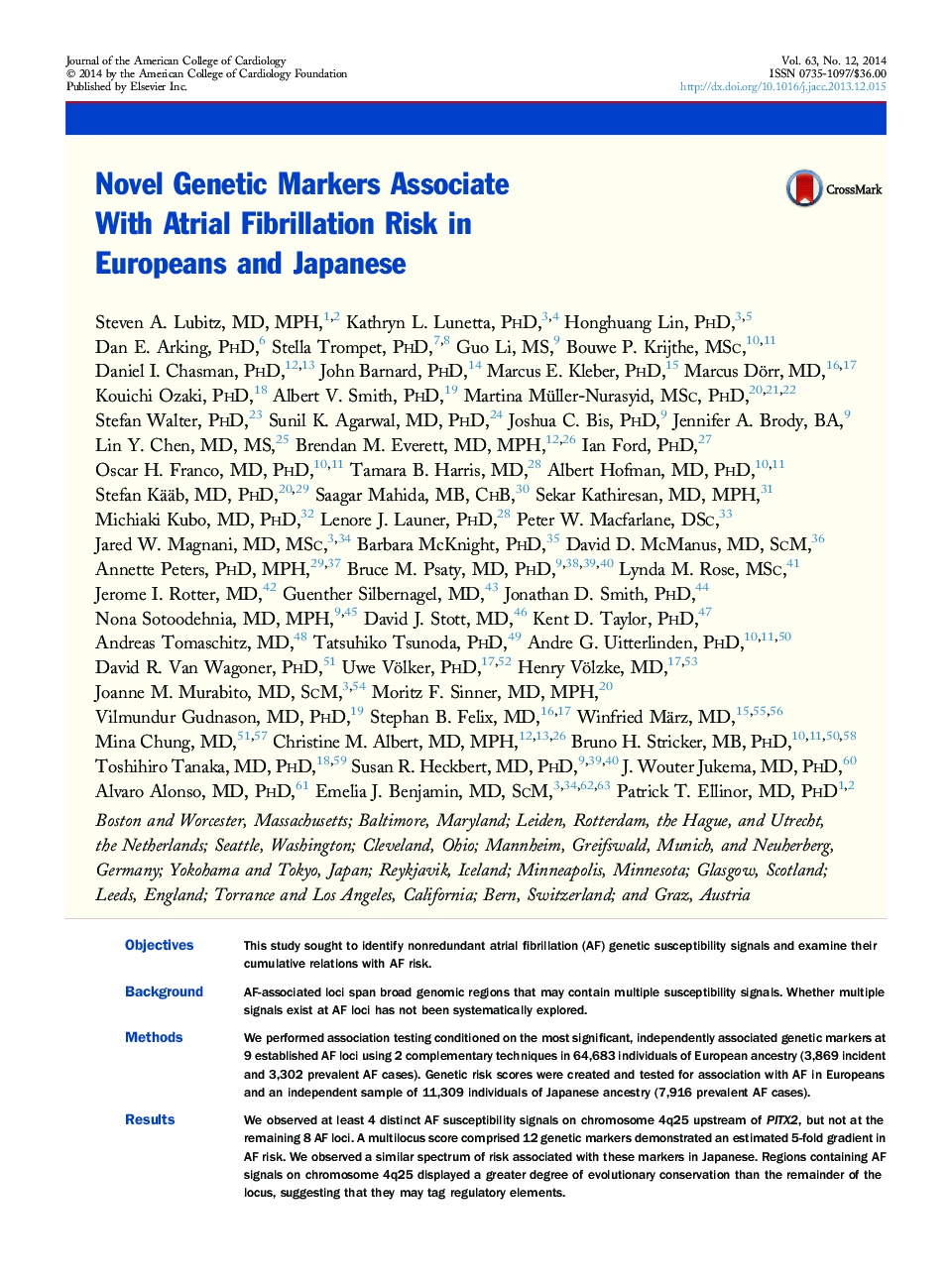| Article ID | Journal | Published Year | Pages | File Type |
|---|---|---|---|---|
| 5983152 | Journal of the American College of Cardiology | 2014 | 11 Pages |
ObjectivesThis study sought to identify nonredundant atrial fibrillation (AF) genetic susceptibility signals and examine their cumulative relations with AF risk.BackgroundAF-associated loci span broad genomic regions that may contain multiple susceptibility signals. Whether multiple signals exist at AF loci has not been systematically explored.MethodsWe performed association testing conditioned on the most significant, independently associated genetic markers at 9 established AF loci using 2 complementary techniques in 64,683 individuals of European ancestry (3,869 incident and 3,302 prevalent AF cases). Genetic risk scores were created and tested for association with AF in Europeans and an independent sample of 11,309 individuals of Japanese ancestry (7,916 prevalent AF cases).ResultsWe observed at least 4 distinct AF susceptibility signals on chromosome 4q25 upstream of PITX2, but not at the remaining 8 AF loci. A multilocus score comprised 12 genetic markers demonstrated an estimated 5-fold gradient in AF risk. We observed a similar spectrum of risk associated with these markers in Japanese. Regions containing AF signals on chromosome 4q25 displayed a greater degree of evolutionary conservation than the remainder of the locus, suggesting that they may tag regulatory elements.ConclusionsThe chromosome 4q25 AF locus is architecturally complex and harbors at least 4Â AF susceptibility signals in individuals of European ancestry. Similar polygenic AFÂ susceptibility exists between Europeans and Japanese. Future work is necessary to identify causal variants, determine mechanisms by which associated loci predispose to AF, and explore whether AF susceptibility signals classify individuals at risk for AF and related morbidity.
